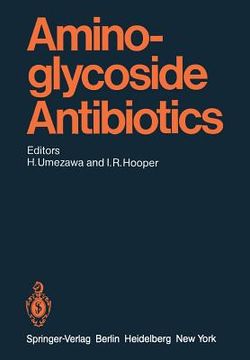Share
aminoglycoside antibiotics (in English)
Y. Ito
(Contributions by)
·
Hamao Umezawa
(Illustrated by)
·
Irving R. Hooper
(Contributions by)
·
Springer
· Paperback
aminoglycoside antibiotics (in English) - Umezawa, Hamao ; Hooper, Irving R. ; Ito, Y.
$ 104.20
$ 109.99
You save: $ 5.79
Choose the list to add your product or create one New List
✓ Product added successfully to the Wishlist.
Go to My WishlistsIt will be shipped from our warehouse between
Thursday, May 16 and
Friday, May 17.
You will receive it anywhere in United States between 1 and 3 business days after shipment.
Synopsis "aminoglycoside antibiotics (in English)"
The first useful antibiotic found by screening was streptomycin. The late Prof. WAKSMAN started screening for antibacterial antibiotics in 1940 and, after finding actinomycin in 1941, he and his collaborators discovered streptomycin in 1944. This antibiotic made a great contribution in saving human lives from tuberculosis and acute serious infections. About 1957, after wide usage of such antibiotics as penicillin, streptomycin, chloramphenicol, tetracycline, and erythromycin, staphy- lococci and Gram negative organisms resistant to all or most antibiotic drugs ap- peared in hospital patients. The origin and treatment of such resistant strains be- came a major topic of investigation. At that time, kanamycin was discovered and used in the treatment of resistant infections. It may be said that the appearance of resistant strains stimulated a resurgence of research on new antibacterial antibiot- ics and their derivatives. In 1965, kanamycin-resistant strains were found in hospital patients and, undertaking the study of the mechanisms of resistance, I found that resistant strains produce intracellular enzymes that can transfer either the terminal phos- phate of ATP or the acetate of acetyl-CoA to the 3' -hydroxyl or the 6' -amino group of 2-deoxystreptamine containing antibiotics. These results, reported in 1967, made it possible to design new synthetic derivatives that would inhibit the growth of kanamycin resistant strains of microorganisms. Thus, a new research area was opened: the development of aminoglycosides useful in the treatment of drug-resis- tant infections.
- 0% (0)
- 0% (0)
- 0% (0)
- 0% (0)
- 0% (0)
All books in our catalog are Original.
The book is written in English.
The binding of this edition is Paperback.
✓ Producto agregado correctamente al carro, Ir a Pagar.

